There is no greater Portuguese dish internationally than Pastéis de Nata - Portuguese Custard Tarts! These rich and creamy tarts are filled with a smooth and velvety custard, perfectly balanced with a flaky and crispy crust that is all homemade with easy to source ingredients.
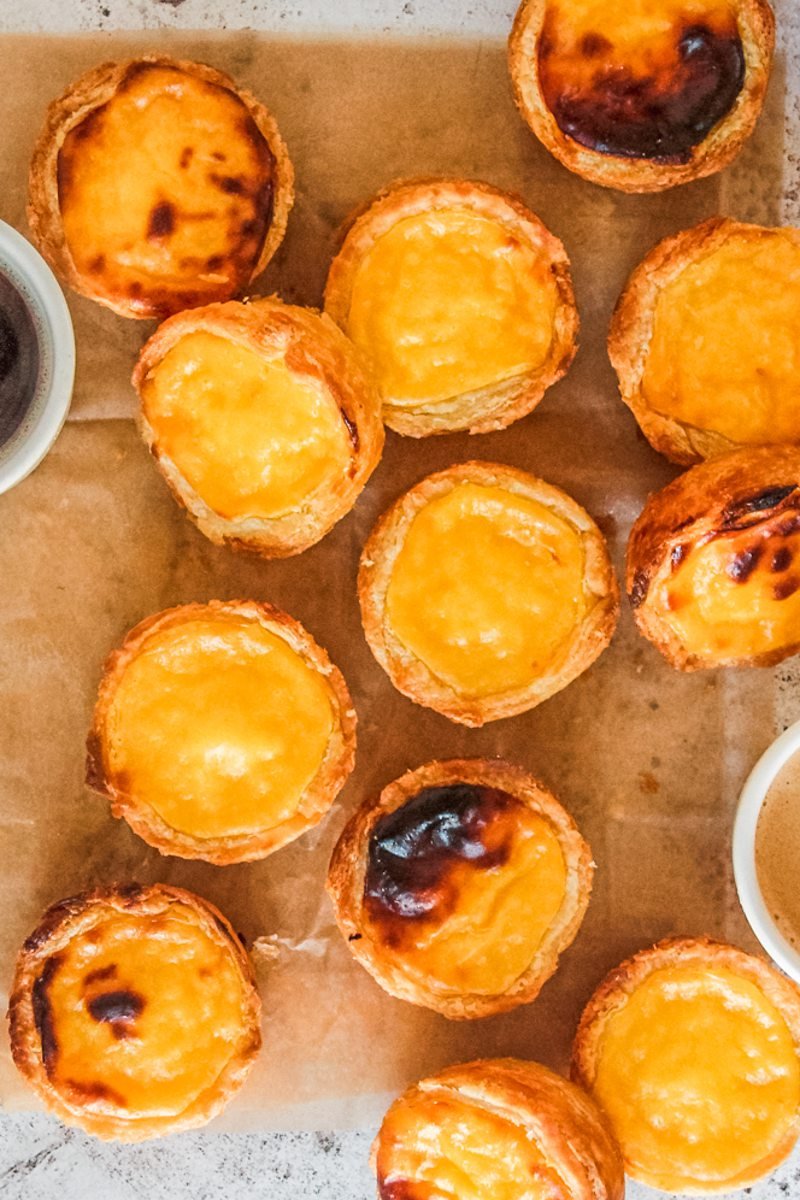
Table of Contents
Pastéis de Nata has the richest custard on earth thanks to a high quantity of egg yolks and flaky pastry that is reminiscent of croissant dough. The recipe for these custard tarts can be made all in a day or, if you want, the pastry made ahead and kept covered in the fridge overnight to make your custard and bake these freshly the next morning.
Ingredients and substitutions for Portuguese Custard Tarts
- Plain flour: All purpose or plain flour work here to create a soft dough that is easy to work with as you layer in the butter.
- Butter: The chilled butter that results in those croissant like layers is unsalted, though you could absolutely use salted and omit the salt into your dough. You could substitute non dairy butter in equal measure, however, I have not tried this.
- Sugar: Superfine or caster sugar is best because of how easily it dissolves and adds sweetness without additional flavors to our custard. Raw sugar or light brown sugar are good substitutes, though the result might be a caramel flavor to the custard.
- Milk: Whole milk is the base of this dish, resulting in that creamy custard and is recommended for making the custard as traditional as possible. If you prefer, a creamy dairy free milk would work.
- Egg yolks: Adding structure and making our custard what it is, result in our rich and creamy custard.
- Corn starch: Sometimes termed cornflour in certain parts of the globe. Corn starch is what gives our pudding that thick texture without being runny. It does need to be heated to 95C/203F before it is activated to thicken.
- Lemon peel: It is recommended to wash your lemon in warm filtered water with a teaspoon of baking soda for 5 minutes. And the peel helps give a depth of flavor to our custard helping balance the sweetness.
- Cinnamon stick: The cinnamon stick results in a soft flavor of cinnamon through our custard alongside the light citrus flavors so it’s best not to skip on adding this also. In other words, if you only have ground cinnamon, add ¼ teaspoon to the cornflour and whisk into your eggs to infuse with the same flavor.
See recipe card for quantities.
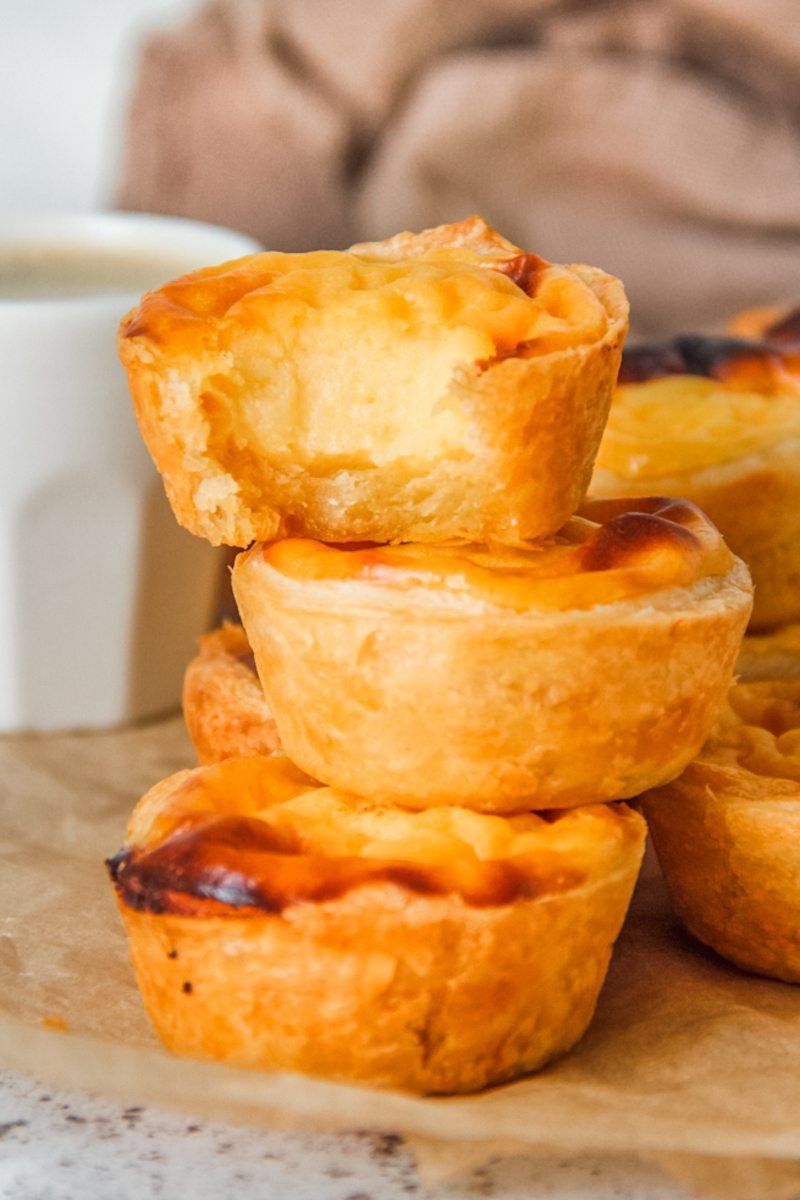
How to make Pastéis de Nata - Portuguese Custard Tarts:

Step 1: Square butter: Cover the butter between two pieces of greaseproof paper and roll evenly all the way to the edges.
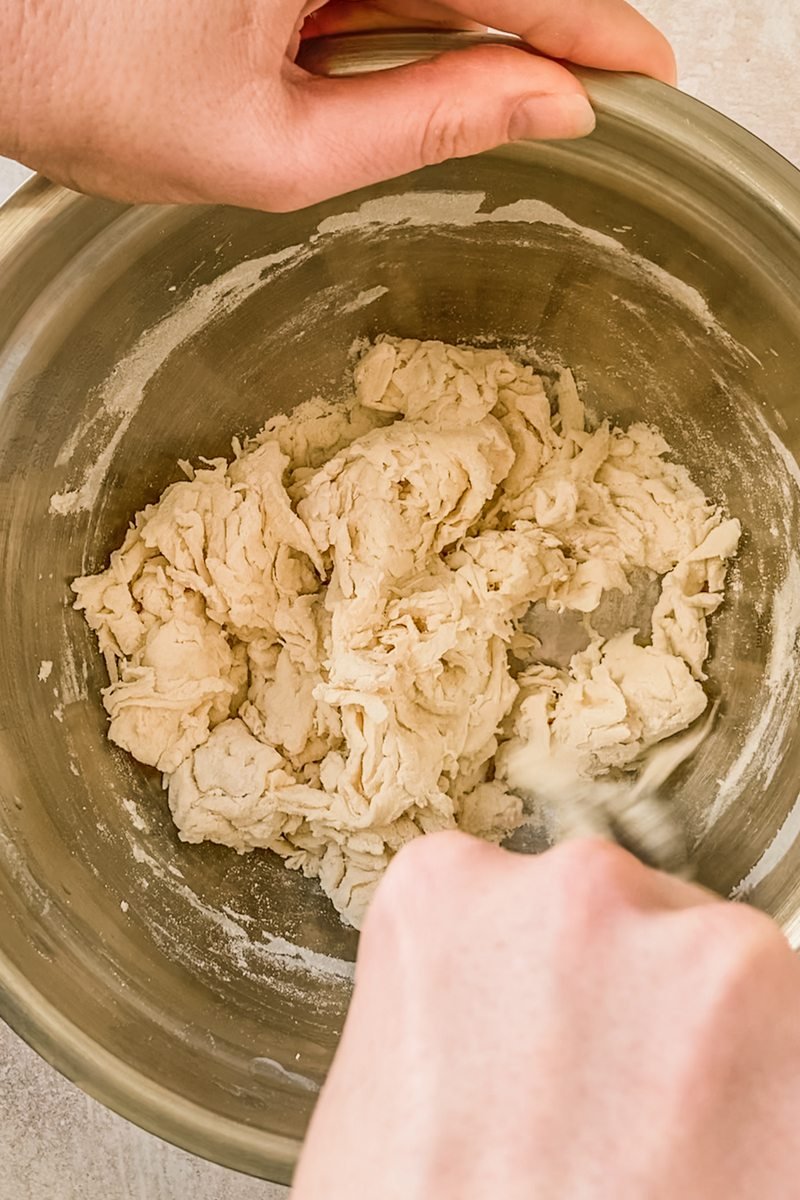
Step 2: Dough base: Place the flour and water into a large bowl and stir together to form your dough.
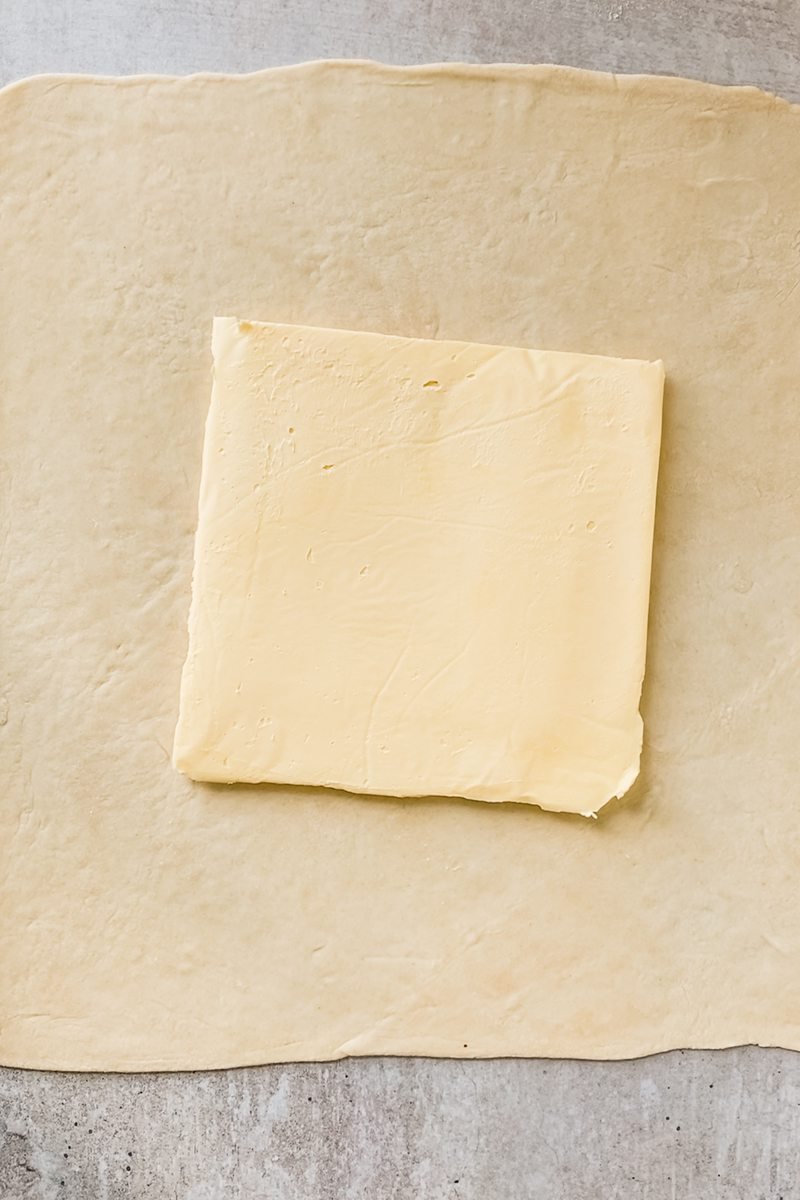
Step 3: Roll: The dough out to a large square and place the butter diagonally in the center of the dough.
Step 4: Fold: The corners of the dough over like you would if you create a square envelope and then roll out to a rectangle and fold in 3 to a wide rectangle.
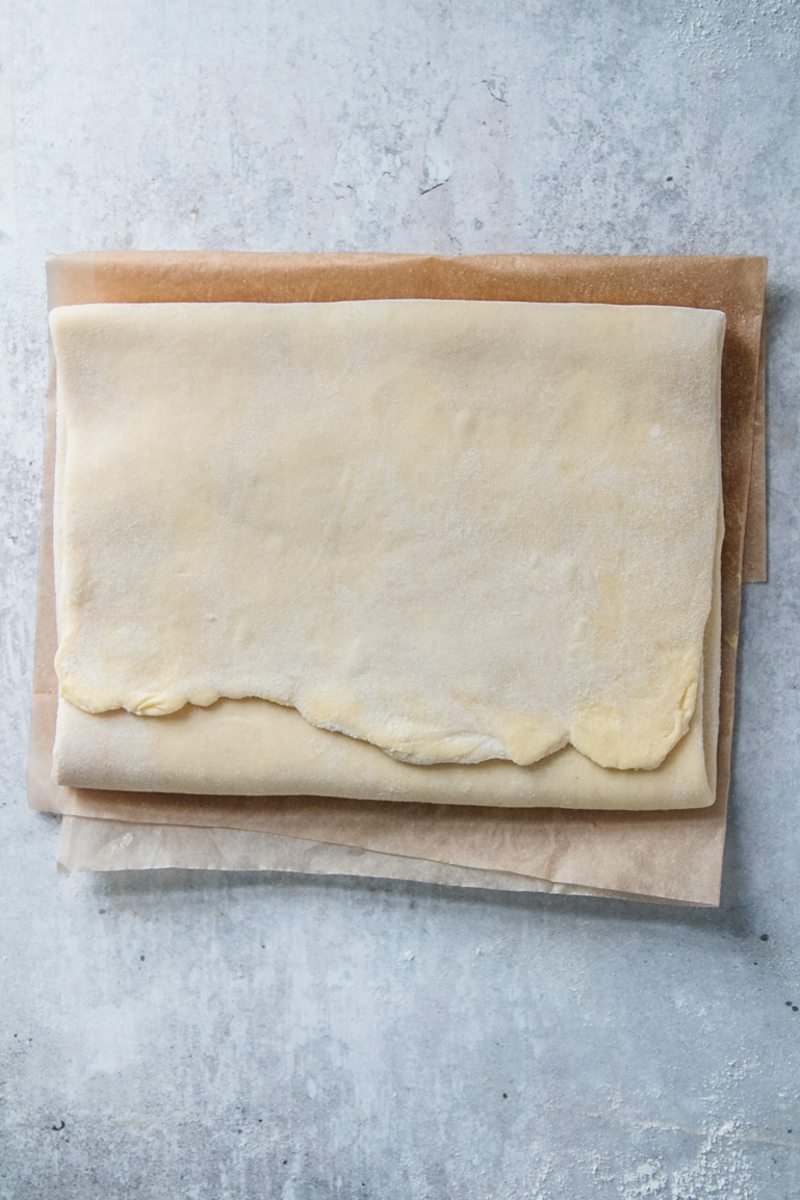
Step 5: Rest and refrigerate: Cover and place the dough in the fridge to rest and chill.
Step 6: Repeat: Roll the dough out to a rectangle and then fold in 3 to a wide rectangle. Cover and return to the fridge to rest and chill.
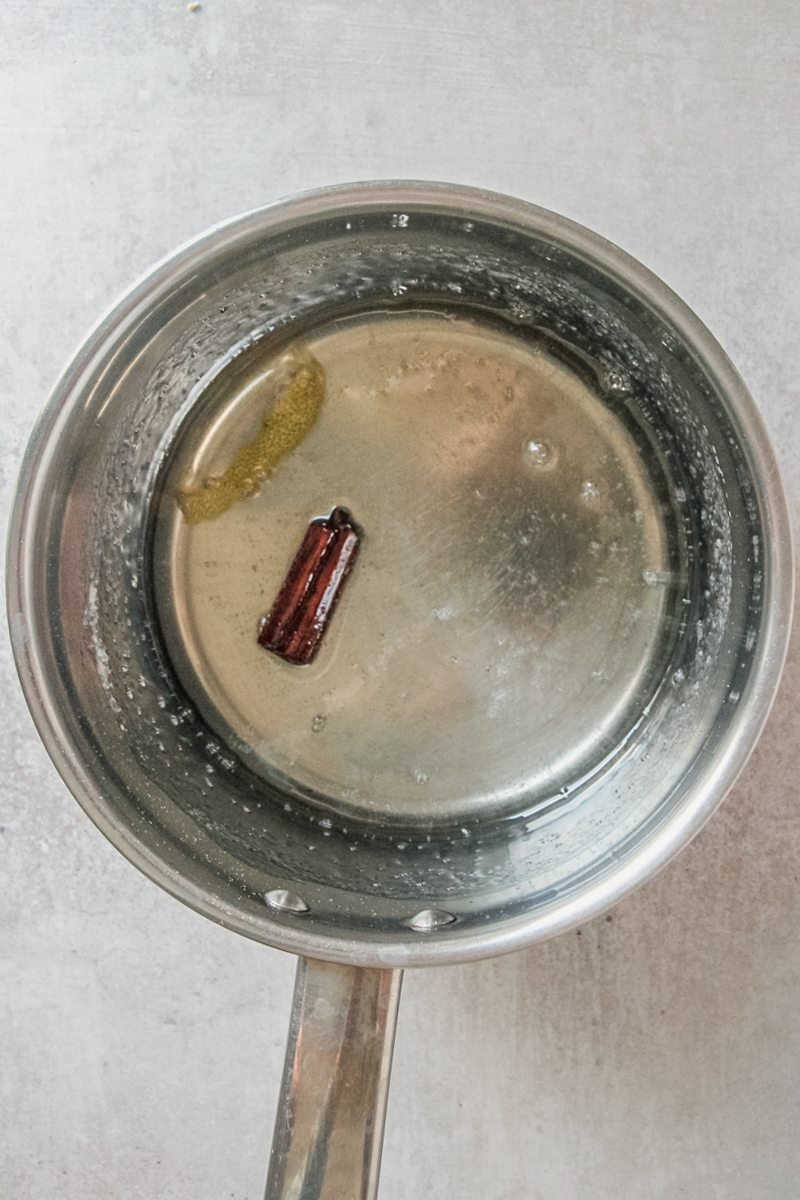
Step 7: Sugar syrup: Simmer the sugar, water, cinnamon stick and lemon peel on medium high heat. Remove the stick and peel and set aside to cool.
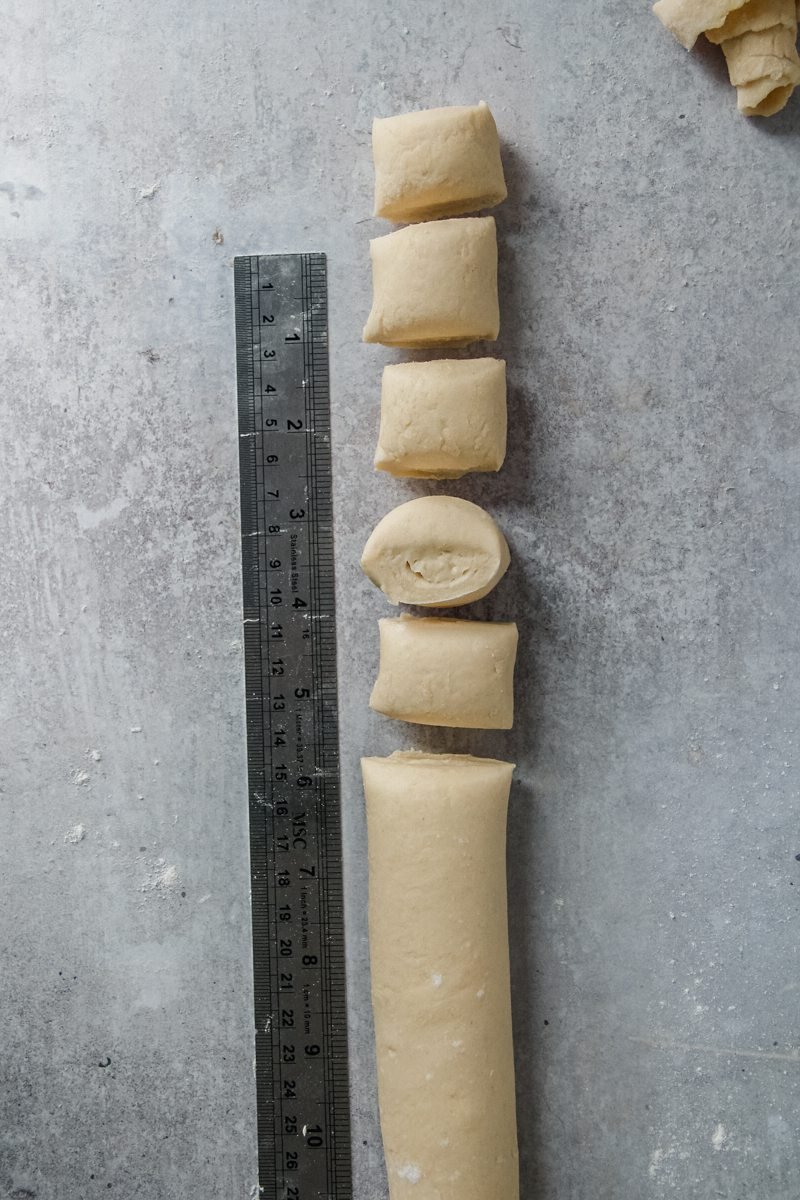
Step 8: Roll the pastry: Roll out to ¼ inch thickness and brush the surface with water before rolling into a log and slicing into 12 even pieces.
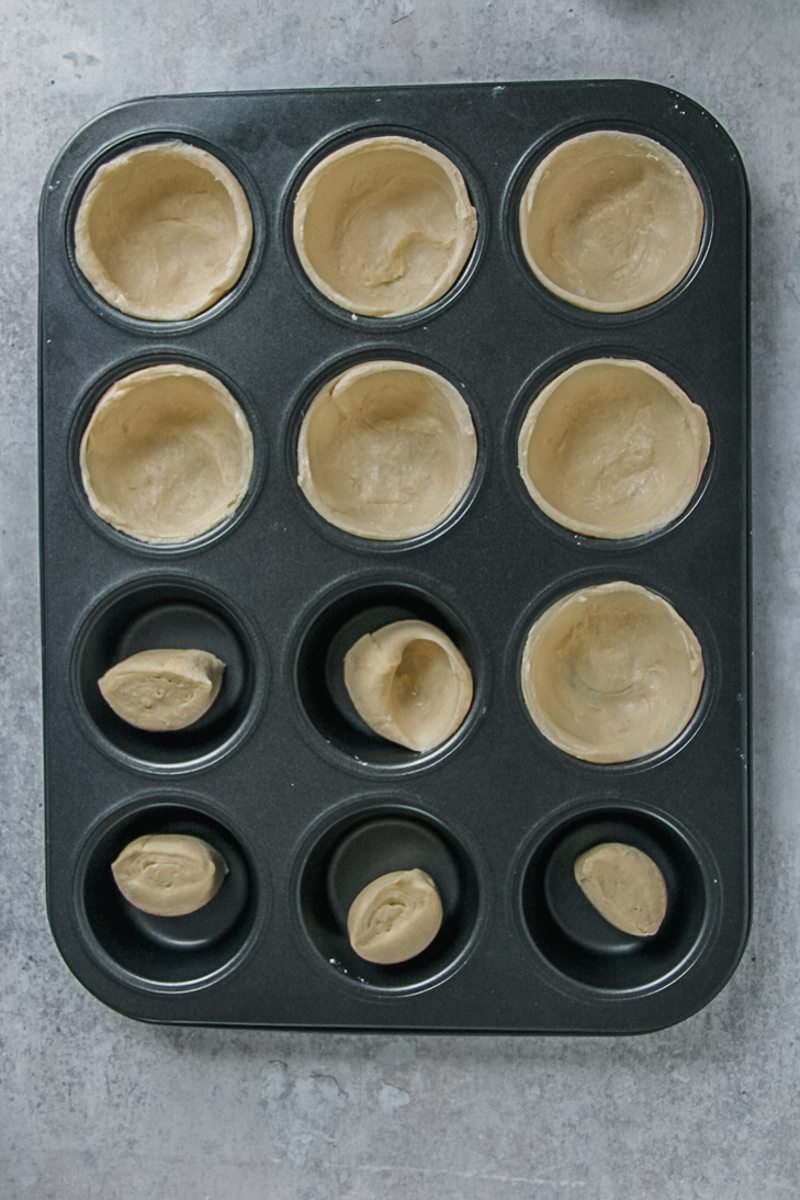
Step 9: Press: With the dough into your muffin tin with lightly wet fingertips until it is slightly higher than the lip of the tin.
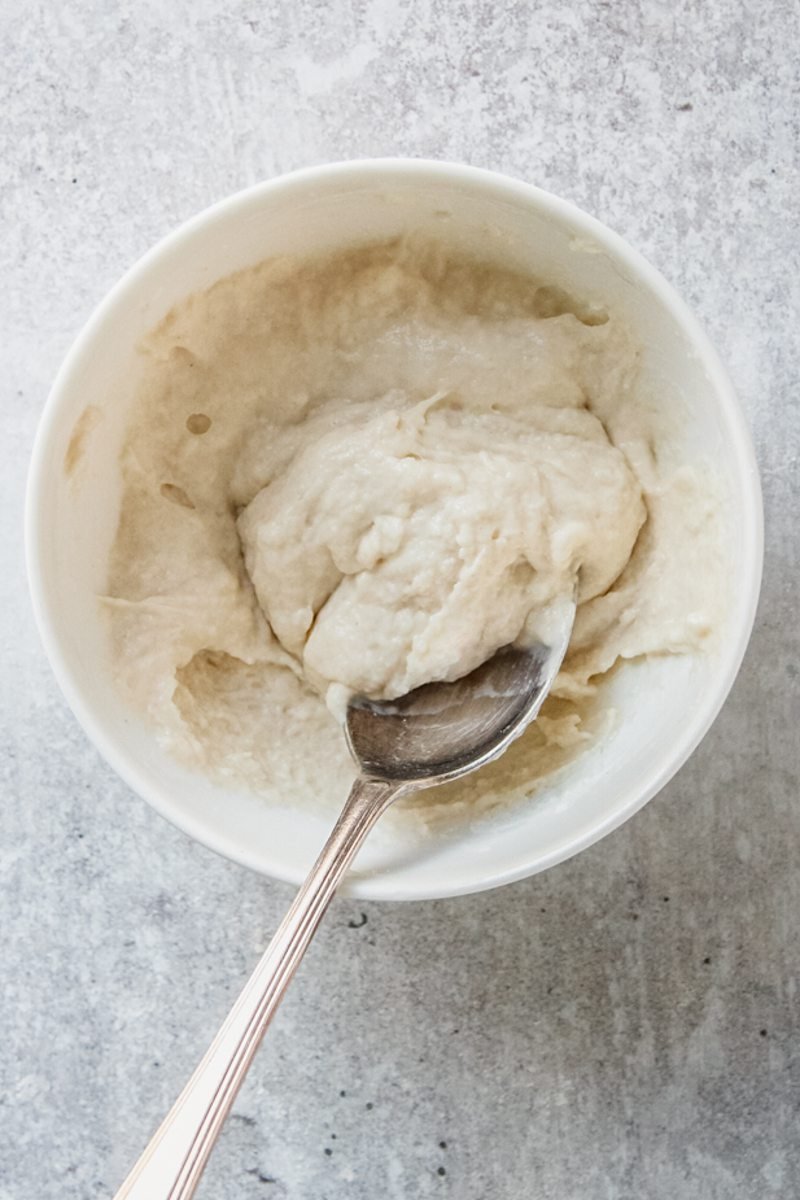
Step 10: Thick milk: Stir the cornflour and flour into a portion of milk until combined and it is a smooth paste.
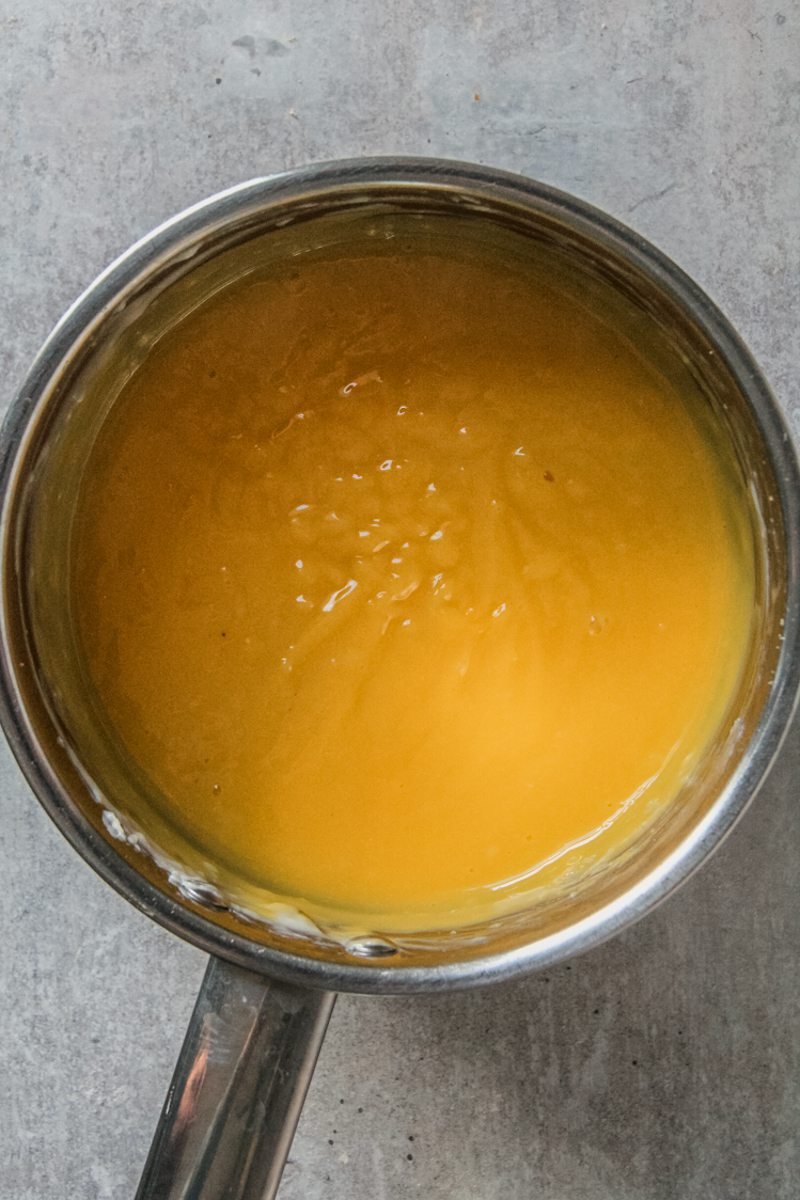
Step 11: Heat: The remaining milk until simmering. Slowly whisk in the milk and flour mixture until thickened and bubbling.
Step 12: Pour: In the sugar syrup whisking until smooth then swiftly whisking in the egg yolks.
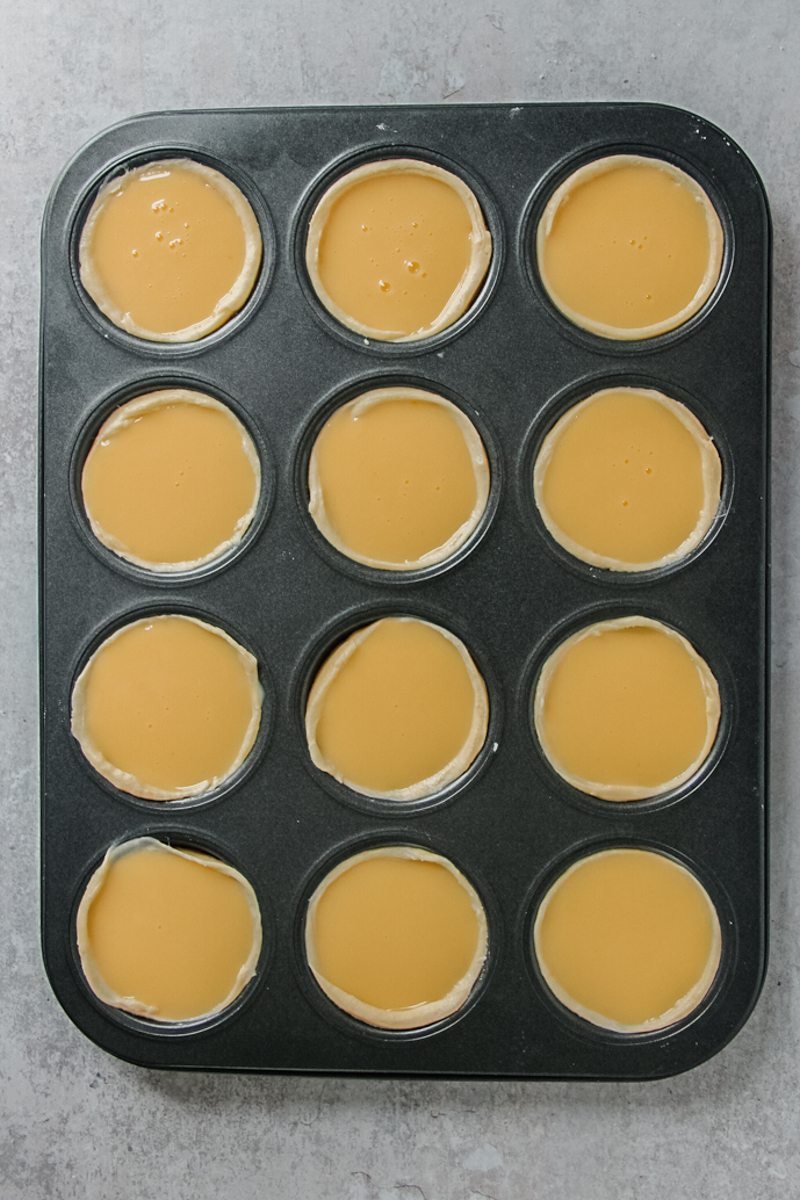
Step 13: Pour: The custard into the prepared pastries.
Step 14: Bake: Until golden and caramelized.
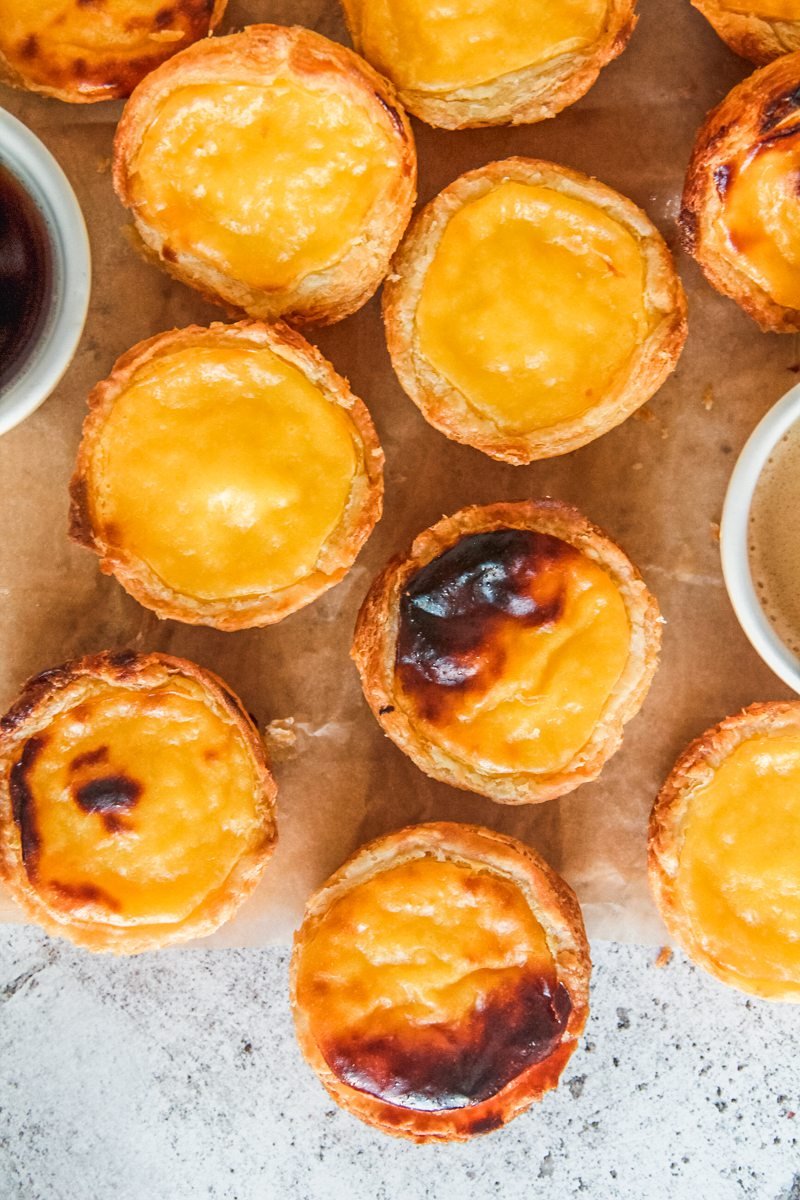
Step 15: Cool completely: Before serving up and digging in!
FAQ's for the best Portuguese Custard Tarts
They are one and the same, the simple difference is the name. De Nata is what those in the north of Portugal call these custard tarts versus the Pastel de Belem being the term from southern Portugal.
Definitely! If you don't have time or the idea of making the pastry is a bit overwhelming, the best substitute is puff pastry that will create the flaky texture you'll know and love.
More custard recipes you'll love

Portuguese Custard Tarts
Ingredients
Homemade Pastry
- 110 grams / 3.9 ounces butter room temperature
- 80 grams / ⅓ cup water
- 160 grams / 1 cup plain flour
Sugar syrup
- 160 grams / ¾ cup + ¾ tablespoon superfine/caster sugar
- 80 grams / ⅓ cup water
- 1 cinnamon stick
- 1 inch lemon peel
Custard
- 368 grams / 1 ½ cups milk
- 60 grams / ⅓ cup + 1 level tablespoon flour
- 16 grams / 2 tablespoons cornflour
- 90 grams / 5 large egg yolks
Instructions
Homemade pastry
- To prepare your butter, place between two pieces of greaseproof paper and fold into a square of 15 cm / 6 inches.
- Tap lightly with a rolling pin to flatten until you can roll it evenly all the way to the edges.
- Place into the fridge to firm up slightly whilst you make the dough.
- Place the flour and water into a large bowl and stir together to form your dough.
- Set aside to rest for 15 minutes.
- Lightly dust your work surface with flour and roll the dough out to a 28 centimeter / 11 inch square.
- Remove the butter from the fridge 5 minutes before placing onto the dough, it should be chilled, but not super firm.
- Place the butter diagonally in the center of the dough so you have the square dough with a diamond butter square in the center.
- Fold the corners of the dough over like you would if you create a square envelope to fully cover the butter, ensure you cannot see any of it once the dough is pinched closed.
- Roll the dough out in one direction to a rectangle and then fold in 3 to a wide rectangle.
- Cover and place the dough in the fridge for 20 minutes to chill.
- Remove from the fridge and roll the dough out to a rectangle in one direction and then fold in 3 to a wide rectangle.
- Cover and return to the fridge for 20 minutes to chill.
- Remove from the fridge and roll out to ¼ inch thickness approximately 30 centimeters / 12 inches wide and brush the surface with water.
- Roll into a log, trimming the edges and slicing into 12 even pieces, approximately 1 inch wide.
- Place into your muffin tray and allow to rest for 10 minutes.
- Lightly wet your fingertips and press the dough into your muffin tin firmly until it is just above the lip of your tin. Set aside.
Sugar syrup
- Meanwhile, place the sugar, water, cinnamon stick and lemon peel in a saucepan on medium high heat, simmering until a candy thermometer registers 104C/220F.
- Remove and discard the cinnamon stick and lemon peel. Set aside to cool completely.
Custard
- Preheat your oven to 270C/520F.
- For the custard, set aside 83 grams milk / ? cup of the milk, adding the flour and cornflour to the portion and stirring until it is combined and a smooth paste.
- Pour the remaining milk into a small saucepan on medium heat until simmering.
- Slowly whisk in the milk and flour mixture, until thickened and bubbling, approximately 3 minutes.
- Remove from the heat and pour in the sugar syrup, stirring to combine.
- Add in the egg yolks, whisking swiftly to incorporate.
- Pour the custard into the prepared pastries.
- Bake for 16 minutes or until golden and caramelized.
- Remove and allow to cool completely.
- Serve up and dig in!
Notes
- Plain flour: All purpose or plain flour work here to create a soft dough that is easy to work with as you layer in the butter.
- Milk: Whole milk is the base of this dish, resulting in that creamy custard and is recommended for making the custard as traditional as possible. If you prefer, a creamy dairy free milk would work.
- Lemon peel: It is recommended to wash your lemon in warm filtered water with a teaspoon of baking soda for 5 minutes. And the peel helps give a depth of flavor to our custard helping balance the sweetness.
- Cinnamon stick: The cinnamon stick results in a soft flavor of cinnamon through our custard alongside the light citrus flavors so it’s best not to skip on adding this also. If you only have ground cinnamon, add ¼ teaspoon to the cornflour and whisk into your eggs to infuse with the same flavor.
- Rolling pin: A rolling pin will help you achieve a nice consistent pastry and rolled out butter, however, you could substitute a wine bottle for similar results.
- Muffin tin: A standard 12 cup capacity muffin tin was used and is best here.
Nutrition
Subscribe to receive a free weekly newsletter using seasonal produce as well as exclusive content!
Made it and loved it?
If you have made this recipe, it would mean so much to leave a review below to help more people find this.



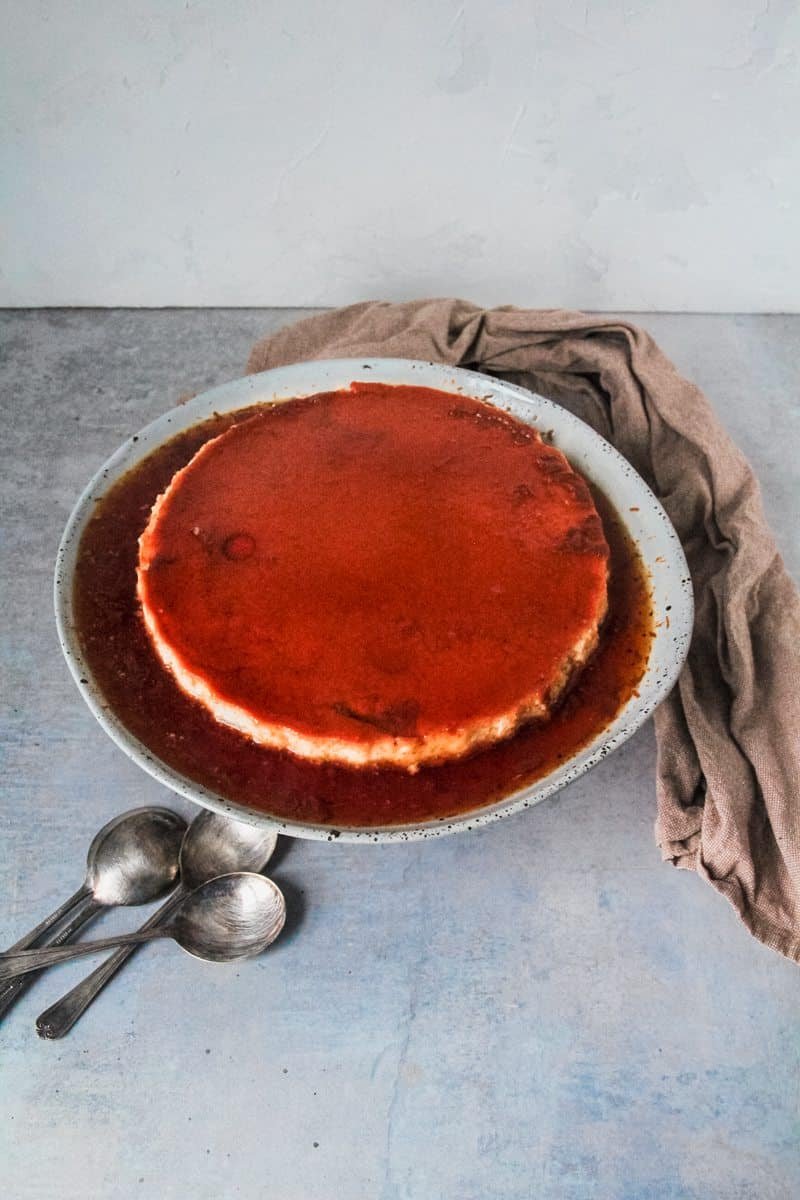



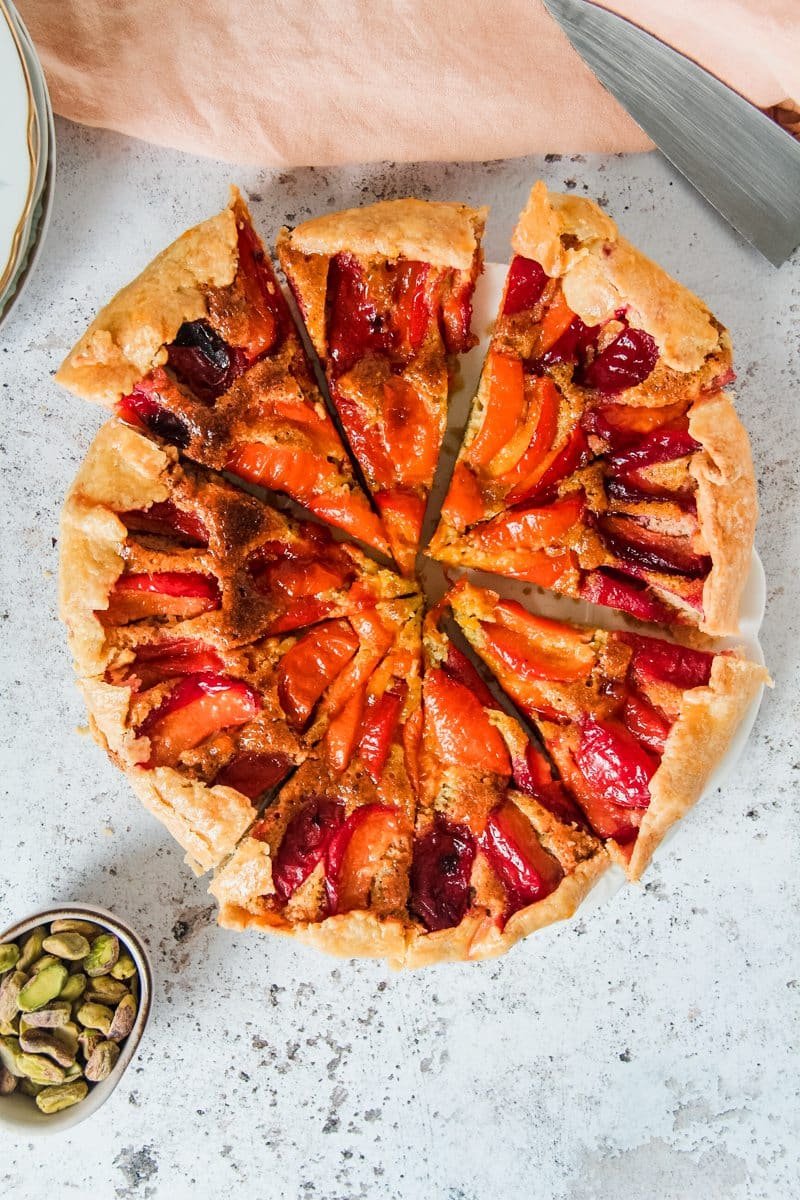
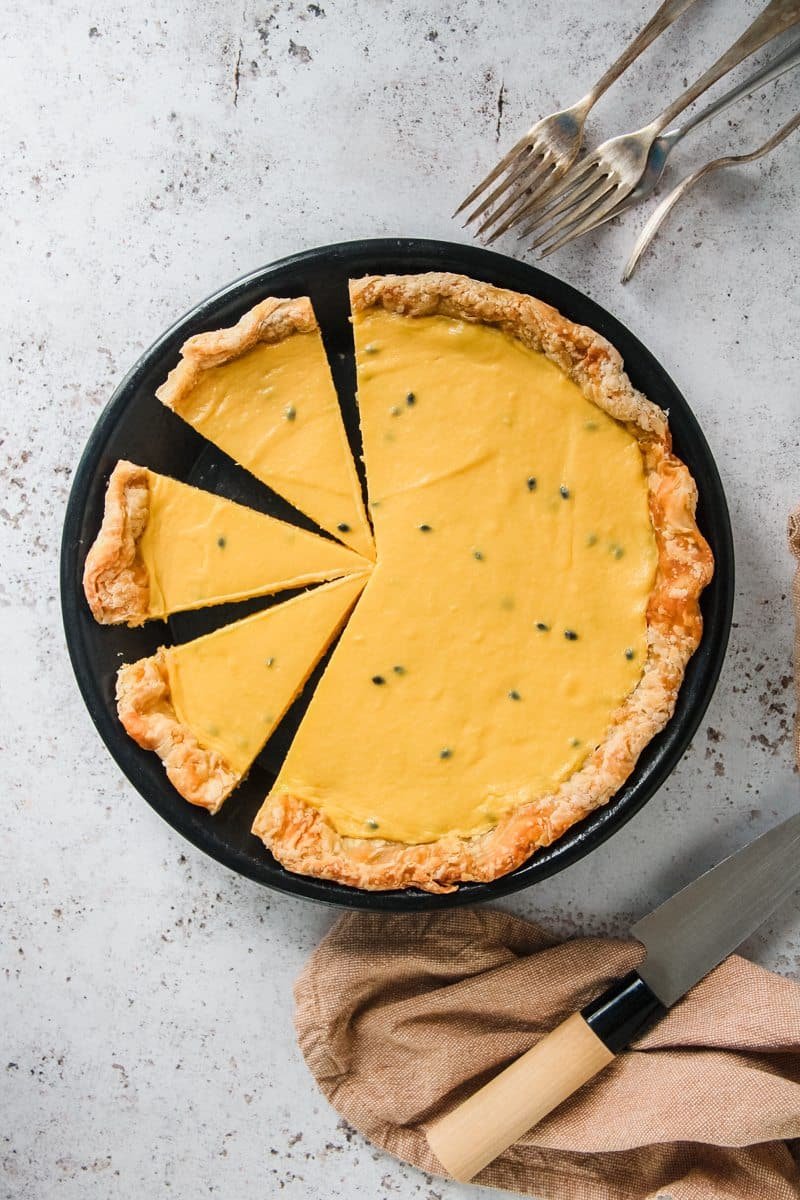
Leave a Reply